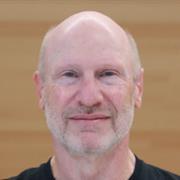
Mark Fox
Mark S. Fox is the Distinguished Professor of Urban Systems Engineering at the University of Toronto. He is a Professor of Industrial Engineering with a cross appointment in the Department of Computer Science, Director Urban Data Centre in the School of Cities, founding director of the Centre for Social Services Engineering, and head of the Enterprise Integration Laboratory.
Prof. Fox is a Fellow of the Association for the Advancement of Artificial Intelligence (AAAI), was a AAAI councilor, and was a co-founder of the AAAI Special Interest Group in Manufacturing. He is a Fellow of the Institute for Electrical and Electronic Engineering (IEEE), and a Fellow of the Engineering Institute of Canada. He was a joint fellow of the Canadian Institute for Advance Research and PRECARN. He is a past holder of the NSERC Industrial Research Chair in Enterprise Integration, and was a Senior Fellow in the Global Cities Institute. He received a B.Sc. in Computer Science from the University of Toronto in 1975, and his Ph.D. in Computer Science from Carnegie-Mellon University in 1983.
Prof. Fox’s current research focuses on Smart Cities. In particular, ontologies for modelling cities and their performance (Fox, 2013). He led the development of the Global City Indicator Ontologies that provide a computational representation of ISO 37120 city indicator definitions and their instantiation. These ontologies have formed the basis of the ISO/IEC 21972:2020 standard for city indicators. He also led the development of the iCity Transportation Planning ontologies, which has formed the basis of the ISO/IEC 5087 series of city data model standards currently under development.
Prof. Fox leads the development of the Common Approach Project’s Common Impact Data Standard(CIDS). CIDS forms the core of the Canada’s Digital Supercluster Compass Project Ontology. Compass is creating a nation wide information infrastructure for the Social Services sector.
Prof. Fox’s research career has focused primarily on two questions:
- How to solve “real world” problems in the presence of constraints, and
- How to represent the knowledge required to solve “real world” problems.
